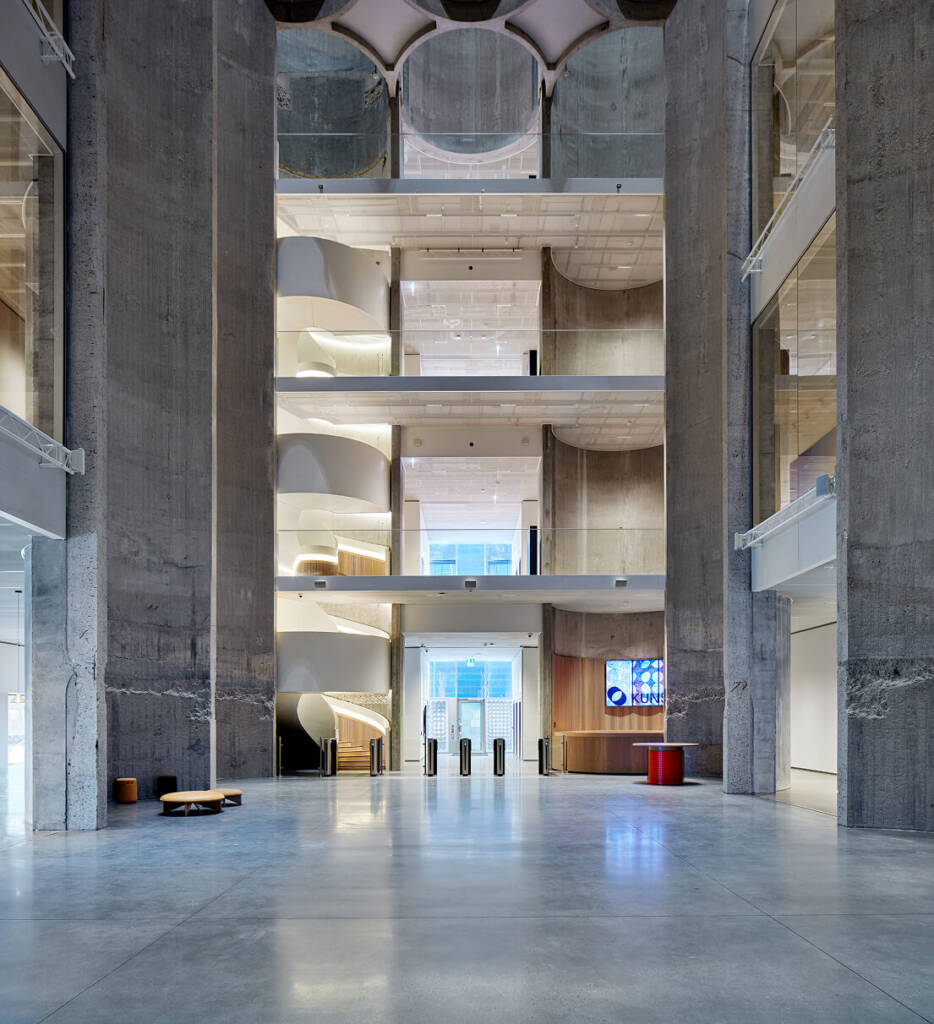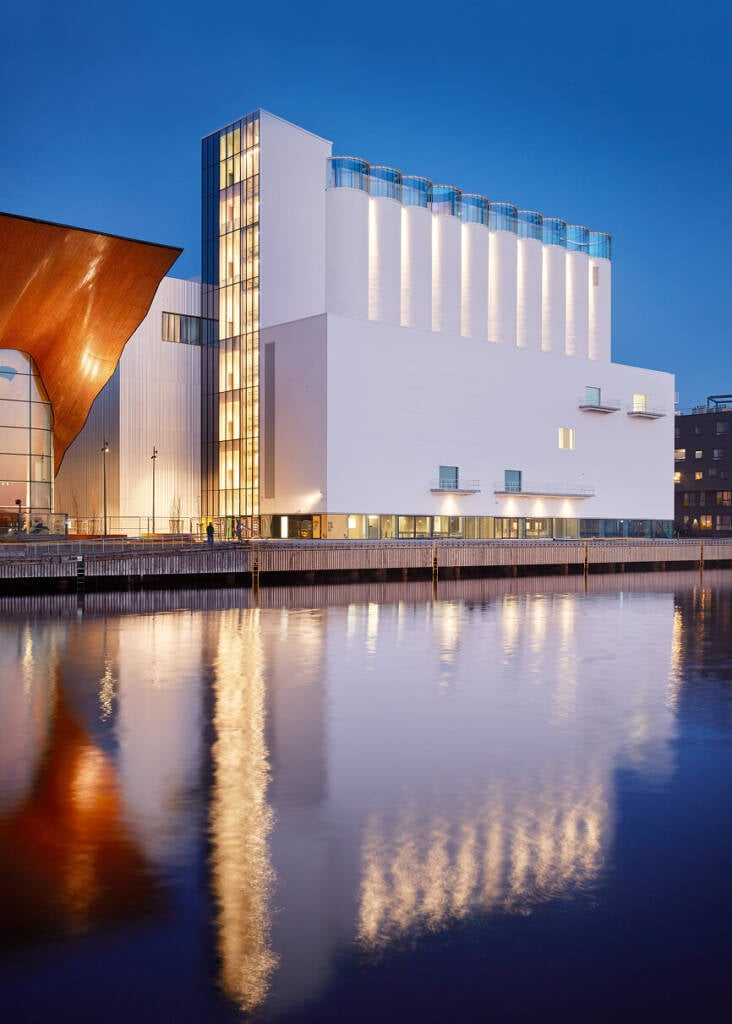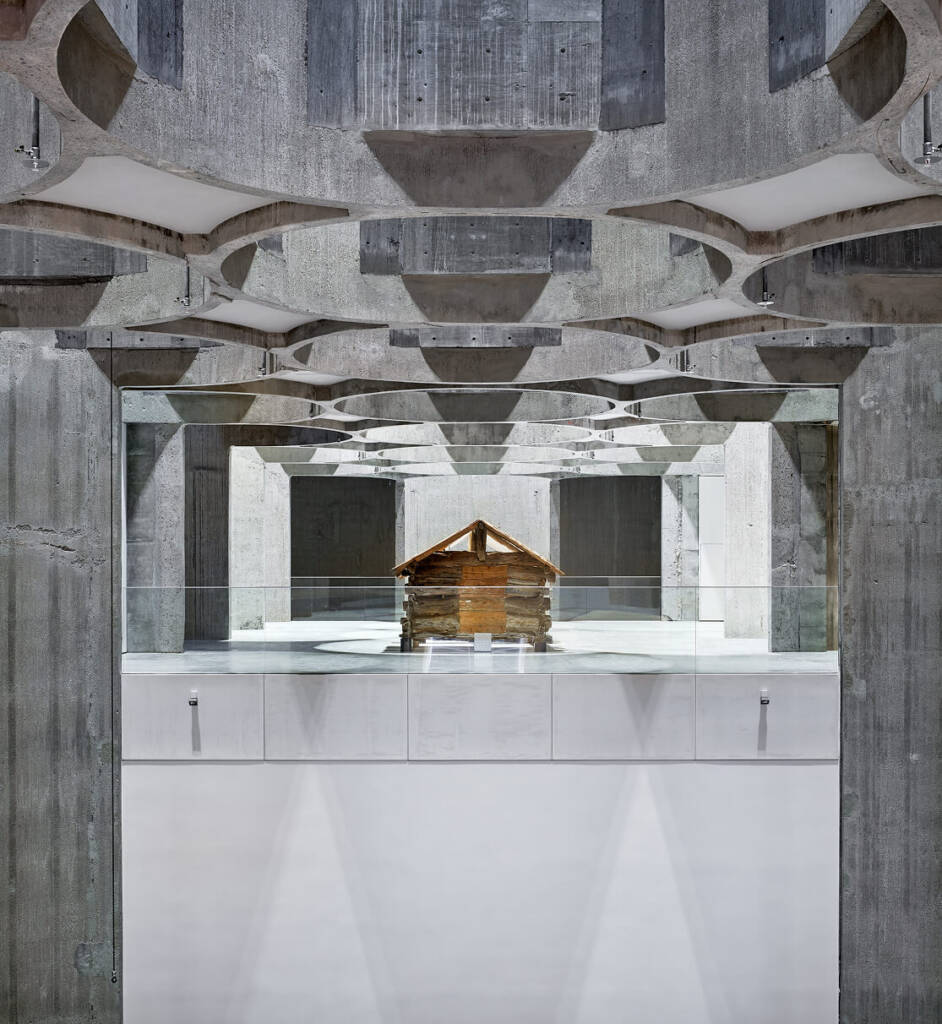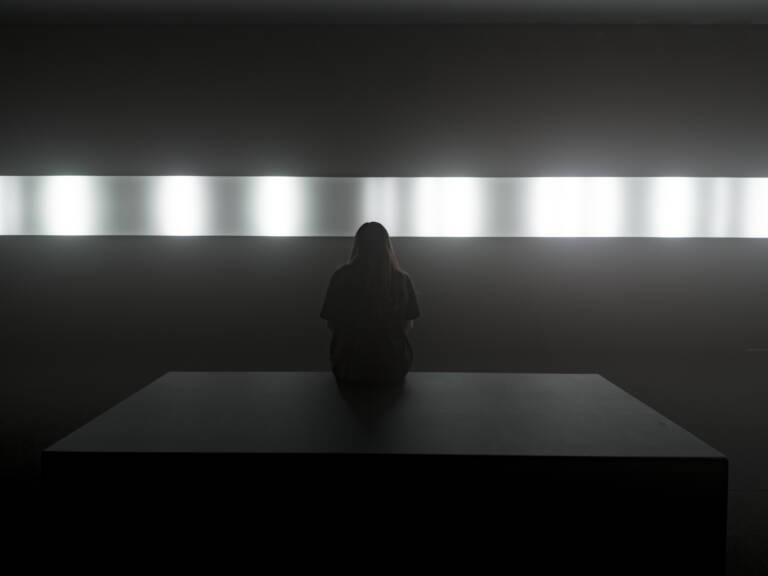Jónsi has always worked with feeling. Whether as frontman of Sigur Rós or through his solo explorations in sound and scent, his work bypasses language to reach a space where emotion lives before words. With VOX, now installed at Kunstsilo in Kristiansand, he creates a world built entirely from voice, vibration, and scent.
VOX is on view at Kunstsilo, Norway’s bold new museum of Nordic art. Built within a repurposed 1930s grain silo, the museum merges industrial architecture with contemporary vision — a space that honours its history while making room for the future. With over 8,000 works and the world’s largest collection of Nordic modernist art, Kunstsilo is a significant new centre for culture and visual art in the region. As Jónsi’s VOX resonates through its concrete interior, the installation fills the new page for the space, bringing together sensory experience, architectural heritage, and contemporary art practice.
VOX premiered at Tanya Bonakdar Gallery in Los Angeles in 2023. Now, it finds a new home at Kunstsilo in Kristiansand, Norway, until October 12th, 2025. The exhibition marks Jónsi’s first solo show in Europe outside of Iceland.
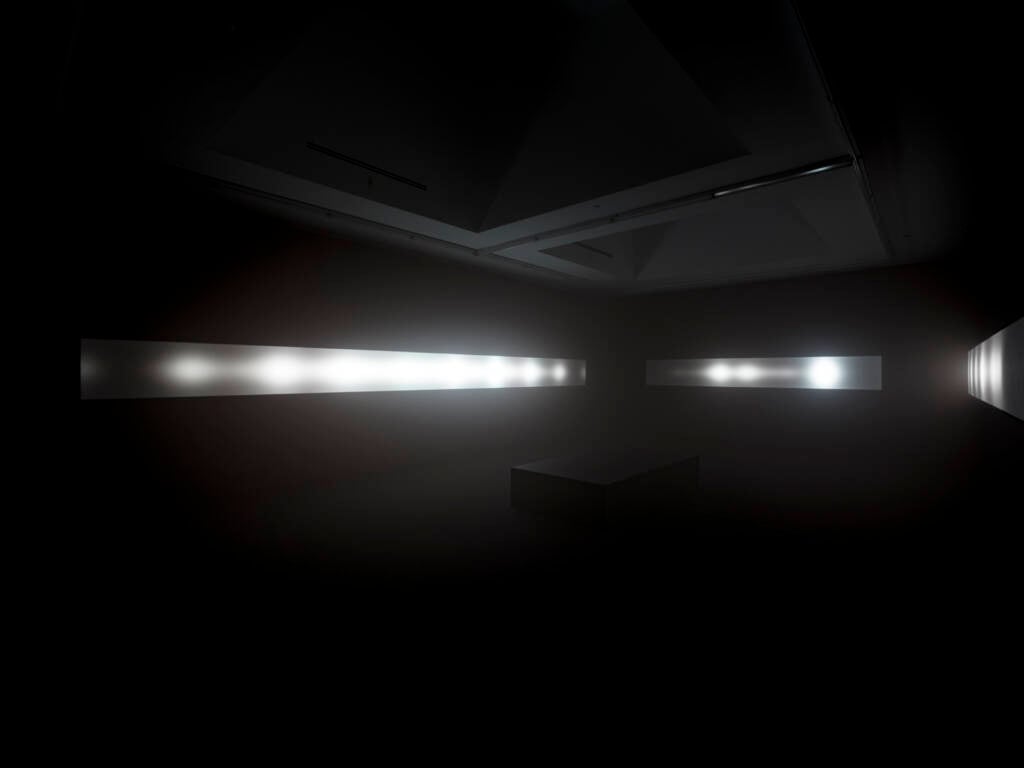
Vox, 2023; 8 – channel sound installation, speakers, LED screens, fog, scent (Vetiver root, galbanum, angelica root, iris root/ orris, cis-3-hexenol); Dimensions variable; Duration: 25 minutes; Edition of 3, 1AP
Photography by JEFF MCLANE
Video by WALKER SAYAN (TIN DRAGON MEDIA)
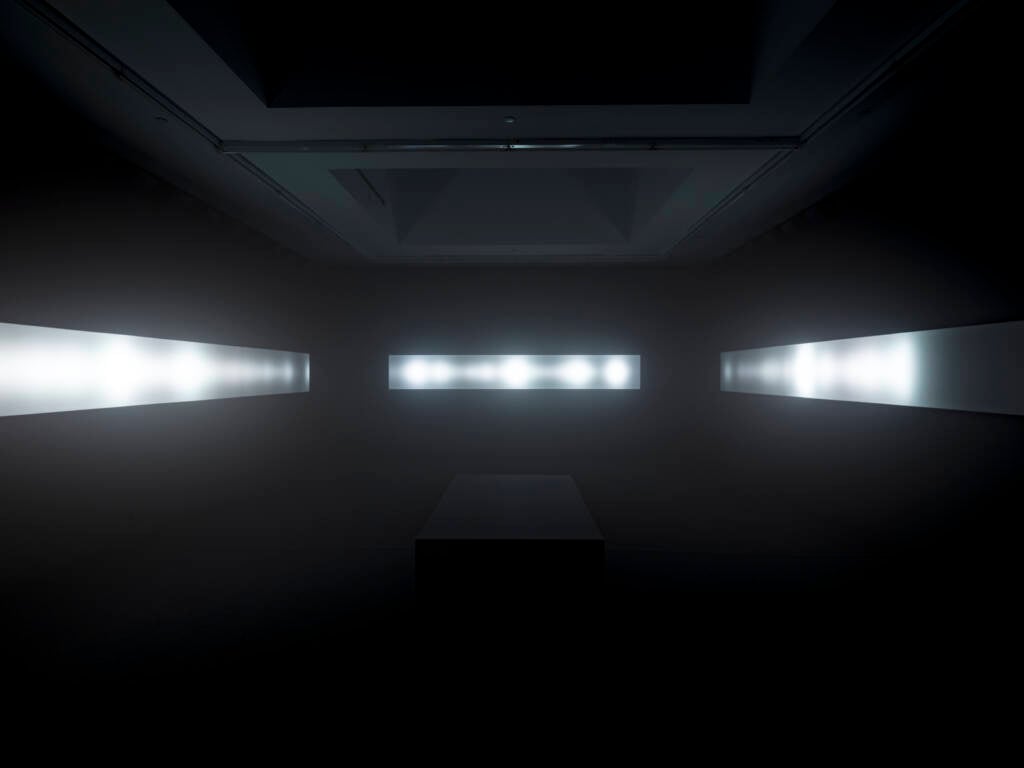
Vox, 2023; 8 – channel sound installation, speakers, LED screens, fog, scent (Vetiver root, galbanum, angelica root, iris root/ orris, cis-3-hexenol); Dimensions variable; Duration: 25 minutes; Edition of 3, 1AP
Photography by JEFF MCLANE
Video by WALKER SAYAN (TIN DRAGON MEDIA)
Describing colours and shapes is easy. But how do you put scent, sound, or feelings into words? VOX, the new installation by Jónsi at Kunstsilo in Kristiansand, resists simple explanation. Blending light, scent, and sound into a fully immersive experience, it’s not a work you observe — it’s one you feel. VOX offers something deeply personal: a sensory landscape that speaks differently to each visitor, asking not to be understood, but absorbed.
When entering the anteroom of VOX, you catch a glimpse of the installation. For a moment, you freeze. The earthy scent of vetiver and the sound trickle in from beyond the walls. Already, the world outside has gone quiet. Inside the installation space, four LED screens pulse in hypnotic rhythm, while sound flows from 52 evenly distributed speakers, including subwoofers hidden beneath the benches. You feel it in your chest before you consciously hear it. The sound is Jónsi’s voice — layered, reversed, stretched, distorted, and processed through AI and harmonic engines. It surrounds, transforming the voice into something elemental.
“Every sound in there is my voice,” Jónsi explains. “It’s processed in every possible way — natural, stacked, reversed, distorted. The voice is the oldest instrument, older than speech. It connects us to something deep, ancient.” VOX reimagines that essence through digital techniques, blending the sounds of different tonalities in a haunting, poetic dialogue. That deep connection led him to title the work VOX — Latin for “voice.” In this installation, the voice becomes landscape, atmosphere, and memory. The experience flows across five distinct chapters, from choir-like harmonies to abstract textures. “I always start with the music,” Jónsi says. “Breaking it into chapters just helps me focus while building something big. But it’s not like you hear a clear start and finish. It all flows. You don’t know where it begins or ends.”
The installation, originally premiered at Tanya Bonakdar Gallery in Los Angeles in 2023, now makes its European debut at Kunstsilo in Kristiansand, Norway. On view till October 12th, 2025, it marks Jónsi’s first solo exhibition in Europe outside of Iceland. Curator Karl Olav Segrov Mortensen calls it “a complete expansion of the senses. Jónsi opens a space where technology, intuition, and nature are interwoven in a way that feels both ancient and futuristic.”
The sound is not alone. There’s the scent. It hangs in the air like a memory you can’t quite place. Earthy and green. Jónsi, a part of the family-run perfumery, composed the fragrance himself, a blend of vetiver, galbanum, and over 40 aroma molecules. “I love scent. Not perfume — scent. There’s a difference. Scent is raw, emotional, instinctive. It moves you like music does, only invisibly.” He describes perfumery as a bottomless pit of obsession. “You have to love it because you’re constantly failing,” he laughs. “But you learn with every failure. And when it works, it moves you in a way you can’t explain.”
That’s true of VOX as a whole. The experience is immersive, meditative, and deeply emotional. You don’t watch the installation so much as you drift into it. Light, sound, vibration, and scent surround you, guiding you through states of calm, intensity, unease, or wonder. There’s no narrative, only sensation. “I never know how people will respond,” Jónsi admits. “But if someone comes out and says they felt something, anything, that’s enough. That’s the goal.”
Viewers enter not just a room, but a carefully tuned emotional and sensorial atmosphere. It is a place where smell, light and vibration all come together to create an unforgettable experience. You can sit there for hours and forget where you are. VOX invites not only observation, but transformation. It does not tell you what to feel. Instead, it reminds you that feeling is possible.
The exhibition runs until October 12th, 2025 at Kunstsilo, Kristiansand.
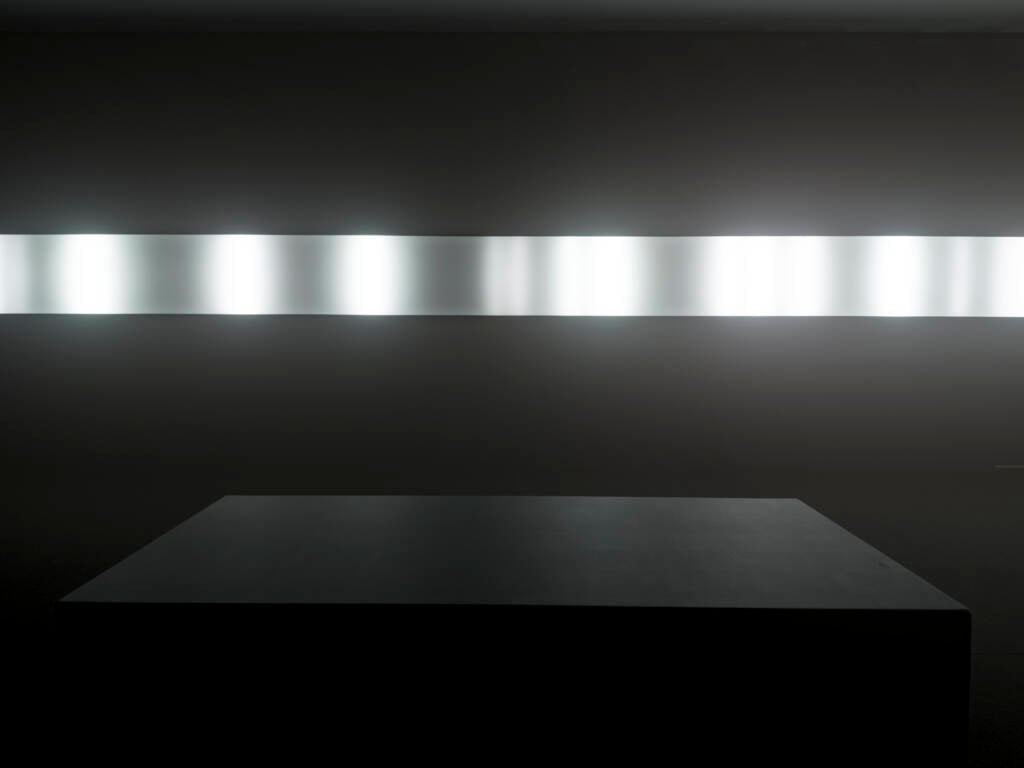
Vox, 2023; 8 – channel sound installation, speakers, LED screens, fog, scent (Vetiver root, galbanum, angelica root, iris root/ orris, cis-3-hexenol); Dimensions variable; Duration: 25 minutes; Edition of 3, 1AP
Photography by JEFF MCLANE
Video by WALKER SAYAN (TIN DRAGON MEDIA)
Kunstsilo: Geometry and a new era of Nordic art
If VOX is a meditation on the human voice, Kunstsilo is a monument to another language: structure and space. The museum on the edge of Kristiansand’s harbour opened its doors in May 2024 after more than a decade of planning, preservation, and transformation. Once a functionalist grain silo from 1935, built in poured concrete and designed by the acclaimed duo Korsmo and Aarsland, the building has been reborn as a national landmark. Not just for its bold architecture, but for housing the world’s largest collection of Nordic modernist art, including works from the Tangen Collection, spanning a period of almost 100 years. Kunstsilo is a dialogue between the industrial and the classical, between the past and the present, a perfect balance of the building’s body and the soul of the art inside.
In 2016, Barcelona- and Oslo-based architectural firm Mestres Wåge, together with Mendoza Partida and BAX Studio, won an international competition with a bold proposal: not to erase the old silo, but to build within it. Rather than clashing with the original structure, they chose to let the silo breathe. The result is two buildings in one. The industrial bones of the 1930s grain facility are interwoven with a clean, contemporary gallery system, giving the art and the architecture equal weight.
At the centre of Kunstsilo is the Silo Hall — a 21-metre-high space carved out from the original concrete cylinders of the former grain silo. Light streams in from narrow glass panels, and walkways cut through and around the old structure, connecting different parts of the museum. Some of the silos are left open to the sky, others still capped with their original tops, revealing the marks and textures left by their industrial past. The result is a blend of old and new, where raw concrete, light, and clean lines come together in a space that feels monumental and quietly reflective.
The team deliberately avoided focusing on glass façades or flashy finishes. Instead, concrete is the main focus, a solid material left mostly untouched. The museum’s silver exterior panels echo the shape of the original silos, offering just enough contrast to feel modern without overpowering the building’s integrity. From the outside, it feels like a relic of the past made futuristic.
Kunstsilo’s significance lies not only in the art it houses but also in the layers of history and architecture it carefully preserves. It’s a space that honours its past while inviting new artistic dialogues. From its exposed concrete silos to a music room and spacious terrace, the building is alive with echoes of its former life. Even the old German crane outside remains a quiet marker of its industrial roots.
As VOX echoes through the Silo Hall, it becomes clear that the building itself is part of the art experience, speaking its own language.
